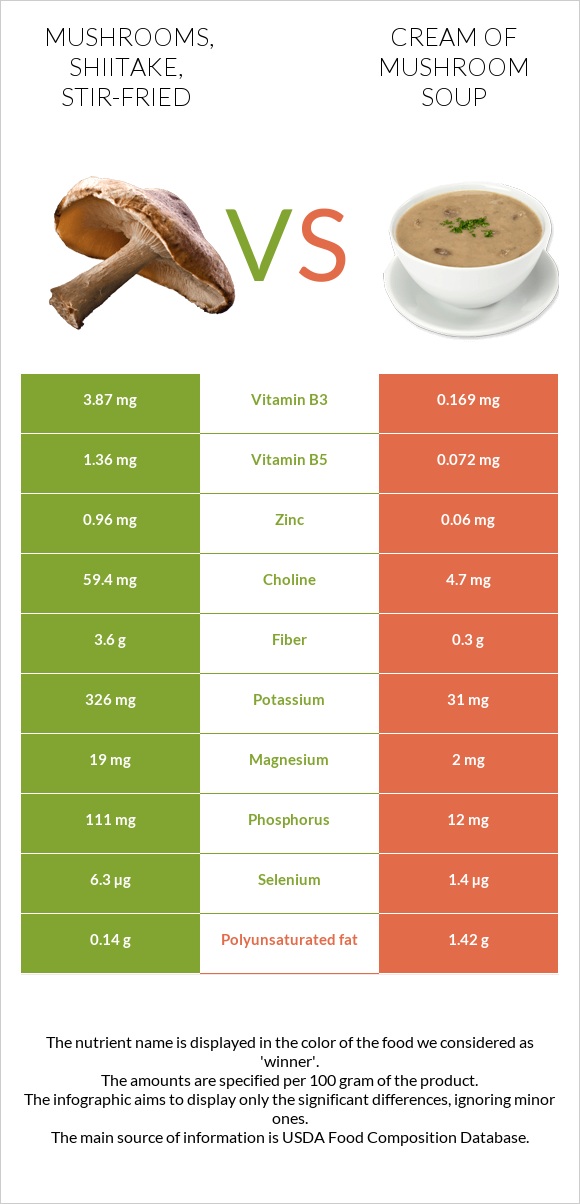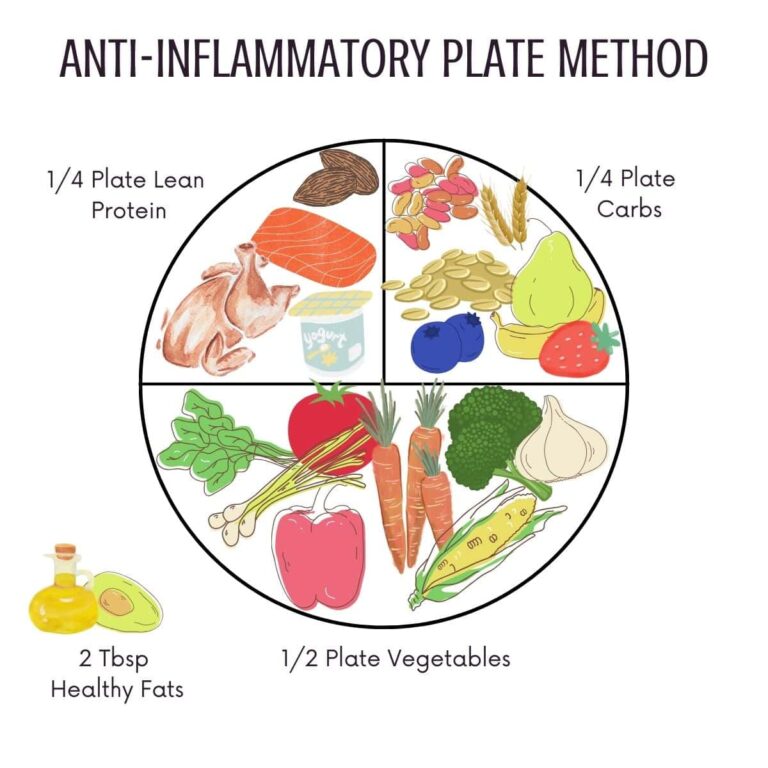Beyond the Pill: Natural Strategies for Quick Headache Relief
The insistent throb, the dull ache, the piercing vise-grip that clamps down on your skull – the experience of a headache is universally understood, yet profoundly personal. For many, the immediate, almost instinctive response is to reach for a pill: a familiar white capsule, a shiny tablet promising swift oblivion to the pain. It’s a narrative ingrained in our modern psyche, a quick fix for a common affliction. But what if the story could be different? What if, beyond the predictable pharmacy aisle, lay a landscape of natural strategies, waiting to be discovered, understood, and harnessed for quick, effective, and sustainable relief?
This is not a tale of abandoning modern medicine entirely, but rather one of empowerment – of stepping beyond the immediate reflex and delving into the profound wisdom of the body and the earth. For the knowledgeable individual, someone attuned to their well-being and seeking a deeper understanding, the journey beyond the pill offers not just symptom management, but an opportunity to forge a more resilient, harmonious relationship with their health. We embark on this exploration to uncover natural allies that can quell the storm of a headache quickly, explain the fascinating mechanisms behind their efficacy, and ultimately, equip you with a personalized toolkit for a life lived with greater ease.
Understanding the Enemy: The Nature of the Headache – A Deeper Dive
Before we delve into solutions, it’s crucial to understand the adversary. A headache isn’t a singular entity; it’s a symphony of discomfort played out in various keys. While we often lump them together, the mechanisms behind different headache types – tension, migraine, cluster, sinus – vary significantly, though many natural strategies offer broad-spectrum relief.
Let’s focus on the two most common and responsive to natural intervention:
- Tension Headaches: These are the most prevalent, often described as a tight band around the head, a dull ache, or pressure. Their genesis is primarily muscular – sustained contraction of the muscles in the scalp, neck, and shoulders. This prolonged tension reduces blood flow, leading to an accumulation of metabolic waste products and irritation of pain-sensitive structures. Stress, poor posture, eye strain, and lack of sleep are common culprits.
- Migraine Headaches: Far more debilitating, migraines are characterized by throbbing pain, often on one side of the head, accompanied by nausea, vomiting, and extreme sensitivity to light and sound (photophobia and phonophobia). While historically thought of as purely vascular (blood vessel dilation), current understanding points to a complex neurobiological disorder involving nerve pathways and brain chemicals (neurotransmitters) like serotonin. The trigeminal nerve, a major cranial nerve, plays a central role, releasing inflammatory neuropeptides that cause blood vessels to dilate and become painful.
The problem with an over-reliance on conventional pain relievers, while effective in the short term, is multifaceted. They can mask underlying issues, leading to a cycle where the root cause is never addressed. More insidiously, frequent use, especially of acute pain medications, can paradoxically cause headaches – a phenomenon known as medication overuse headache (MOH) or rebound headache. This occurs when the brain adapts to the presence of medication, and its absence triggers withdrawal-like symptoms, perpetuating the pain cycle. This is precisely why seeking "beyond the pill" isn’t just an alternative; it’s often a necessary liberation.
The Foundational Pillars of Natural Relief: Daily Rituals for Resilience
Our journey begins not with exotic remedies, but with the fundamental building blocks of health. These aren’t just "good habits"; they are potent, headache-preventing, and often headache-relieving strategies that lay the groundwork for a body less prone to pain.
1. Hydration: The Elixir of Life
It seems almost too simple, doesn’t it? Yet, countless headaches are born from a state of subtle dehydration. I recall a particularly busy day, back-to-back meetings, a flurry of emails, and the water bottle forgotten at my desk. By mid-afternoon, a dull, insistent ache began to bloom behind my eyes, slowly escalating into a full-blown throb. My first instinct was to reach for ibuprofen, but a small voice reminded me: "When was the last time you truly drank water?"
Mechanism: Our brains are approximately 75% water. When dehydrated, brain tissue can temporarily shrink or contract, pulling away from the skull, which can trigger pain receptors. Furthermore, dehydration can lead to a drop in blood volume, causing blood vessels to narrow, and reducing the amount of oxygen and nutrients reaching the brain. Electrolyte imbalances, crucial for nerve function, can also be disrupted.
Quick Fix: Don’t wait until you’re parched. Sip water consistently throughout the day. For an acute headache, rapidly rehydrating with a large glass of water, perhaps infused with a pinch of Himalayan salt or a squeeze of lemon (for electrolytes), can offer surprisingly swift relief within 20-30 minutes. Avoid sugary drinks, which can exacerbate dehydration or cause blood sugar spikes.
2. Sleep Hygiene: The Restorative Power
Sleep is not a luxury; it’s a biological imperative. Yet, in our 24/7 world, it’s often the first thing sacrificed. The morning-after headache, a familiar companion to a night of restless tossing and turning or insufficient hours, is a powerful testament to sleep’s crucial role.
Mechanism: During sleep, our bodies repair, restore, and regulate. Crucially, neurotransmitters like serotonin, which plays a role in pain perception and mood, are balanced. Hormones like cortisol (the stress hormone) and melatonin (the sleep hormone) are regulated. Lack of sleep can disrupt these delicate balances, increase inflammation, and lower our pain threshold. Chronic sleep deprivation also leads to sustained muscle tension, especially in the neck and shoulders, directly contributing to tension headaches.
Quick Fix: While chronic sleep issues require long-term solutions, for an acute headache, a short, restorative power nap (20-30 minutes) in a dark, quiet room can sometimes interrupt the pain cycle, especially if the headache is triggered by fatigue. Ensure consistent sleep patterns generally, aiming for 7-9 hours, and prioritize a cool, dark, quiet sleep environment. Avoid screens an hour before bed.
3. Stress Management: The Silent Trigger
Stress is the ubiquitous modern ailment, a silent architect of tension, anxiety, and, inevitably, headaches. The classic stress-induced tension headache, where the muscles in your neck and shoulders tighten progressively throughout a demanding day, culminating in a vice-like grip around your head, is a vivid example of the mind-body connection in action.
Mechanism: When stressed, our sympathetic nervous system goes into overdrive, triggering the "fight or flight" response. This leads to increased muscle tension (especially in the trapezius, sternocleidomastoid, and temporalis muscles), elevated cortisol levels, and changes in blood flow. Chronic stress depletes neurotransmitters and can make the brain more susceptible to pain signals.
Quick Fix: For an acute stress-induced headache, immediate relaxation techniques are paramount.
- Deep Diaphragmatic Breathing: Inhale slowly through your nose, letting your belly expand, hold for a few seconds, then exhale slowly through pursed lips. Repeat for 5-10 minutes. This activates the parasympathetic nervous system, inducing relaxation.
- Progressive Muscle Relaxation (PMR): Tense and then relax different muscle groups in your body, starting from your toes and working your way up to your head. This brings awareness to tension and encourages release.
- Mindfulness/Short Meditation: Even a 5-minute guided meditation or simply focusing on your breath can help detach from stressful thoughts and reduce physiological arousal.
Targeted Natural Interventions for Acute Relief: Your Immediate Arsenal
Once the foundational pillars are in place, we turn to specific, powerful natural interventions that can act swiftly to diminish or eliminate headache pain.
1. Aromatherapy: The Power of Scent
The olfactory system holds a direct, powerful connection to the brain’s limbic system, which governs emotions, memory, and physiological responses. This is why certain scents can evoke strong memories or, in the case of essential oils, trigger rapid therapeutic effects. I remember a particularly intense migraine starting, the aura beginning to shimmer, and instinctively reaching for a small bottle of peppermint oil. A few deep inhalations, a dab on my temples, and the sharpness of the pain seemed to recede, allowing me to take further action before it fully took hold.
Mechanisms: Essential oils contain volatile compounds that, when inhaled or applied topically, interact with various physiological pathways.
- Olfactory Nerve Stimulation: Direct pathway to the limbic system, influencing mood, stress, and pain perception.
- Topical Absorption: Compounds penetrate the skin, reaching local tissues and the bloodstream, exerting anti-inflammatory, analgesic, or muscle relaxant effects.
- Vasoconstriction/Vasodilation: Some oils can affect blood vessel diameter, crucial for migraine and tension headaches.
Specific Oils for Quick Relief:
- Peppermint Oil: The menthol in peppermint is a natural analgesic and muscle relaxant. It also has vasoconstrictive properties, which can be helpful in early-stage migraines. How to use: Dilute 2-3 drops in a carrier oil (like jojoba or almond) and gently massage onto temples, forehead, and the back of the neck. Inhale directly from the bottle or a diffuser.
- Lavender Oil: Renowned for its calming and anxiolytic properties. It acts as a muscle relaxant and can help reduce the perception of pain. How to use: Diffuse, apply diluted to temples/neck, or add a few drops to a warm bath for overall relaxation.
- Frankincense Oil: A potent anti-inflammatory, frankincense can help reduce the underlying inflammation contributing to headaches. It also promotes feelings of peace. How to use: Dilute and apply to temples, forehead, or diffuse.
- Eucalyptus Oil: Particularly helpful for sinus headaches, eucalyptus can help open airways and reduce pressure. How to use: Inhale from a diffuser or a bowl of steaming water (with caution).
2. Herbal Allies: Nature’s Pharmacy
For centuries, humans have turned to plants for healing. Modern science is now validating much of this ancient wisdom, identifying bioactive compounds responsible for their therapeutic effects.
Specific Herbs for Quick Relief:
- Ginger: This common kitchen spice is a powerhouse anti-inflammatory, comparable to NSAIDs in some studies. It also has anti-nausea properties, making it particularly useful for migraines accompanied by stomach upset. How to use: Chew a small piece of fresh ginger, drink strong ginger tea (steep grated ginger in hot water for 10-15 minutes), or take ginger capsules (500-1000mg at onset).
- Feverfew (Tanacetum parthenium): Primarily known for migraine prevention, feverfew also has acute anti-inflammatory and anti-spasmodic properties. It contains parthenolide, which inhibits serotonin release from platelets and reduces inflammation. How to use: As a tea, or chew a few fresh leaves (can be bitter), or take standardized capsules (often 125mg).
- Willow Bark (Salix alba): Often called "nature’s aspirin," willow bark contains salicin, which the body converts into salicylic acid, a precursor to aspirin. It provides analgesic and anti-inflammatory effects. How to use: Willow bark tea or standardized capsules. Caution: Avoid if allergic to aspirin, pregnant, or on blood thinners.
- Magnesium: While often a deficiency that contributes to chronic headaches, acute supplementation can sometimes help. Magnesium is crucial for muscle relaxation, nerve function, and regulating blood vessel tone. How to use: Magnesium citrate or glycinate supplements (200-400mg) at the onset of a headache. Magnesium bath flakes (Epsom salts) can also be absorbed transdermally for muscle relaxation.
- Caffeine (with caveats): This is a double-edged sword. Caffeine is a vasoconstrictor, meaning it narrows blood vessels, which can alleviate the vasodilation component of some migraines. It’s often an ingredient in over-the-counter headache remedies. The story: Many coffee drinkers experience headaches if they miss their morning cup. The caveat: Regular, high caffeine intake can lead to dependence and rebound headaches when withdrawn. How to use: A small cup of black coffee or strong tea at the very onset of a headache, especially if you rarely consume caffeine or if your headache is a "withdrawal" headache. Avoid if you suspect caffeine is a trigger for your headaches.
3. Topical Applications & Cold/Heat Therapy: Direct Action
Sometimes, the simplest solutions are the most effective, offering immediate sensory relief.
Mechanisms:
- Cold Therapy: Applies vasoconstriction, reducing blood flow and inflammation. It also numbs nerve endings, dulling pain signals.
- Heat Therapy: Promotes vasodilation, increasing blood flow to tight muscles, easing tension, and promoting relaxation.
- Counter-Irritants (e.g., Menthol): Create a localized sensation (cooling/tingling) that distracts from the pain and can provide mild analgesic effects.
Quick Fixes:
- Cold Pack: Apply an ice pack (wrapped in a cloth) to the forehead, temples, or the back of the neck for 10-15 minutes. This is particularly effective for throbbing headaches or migraines.
- Warm Compress/Heat Pack: For tension headaches, a warm, moist cloth or a heating pad on the neck and shoulders can help relax tense muscles. A warm shower or bath can also be very effective.
- Menthol/Tiger Balm: These balms contain menthol and camphor, which create a cooling sensation and act as mild analgesics. How to use: Gently rub a small amount onto your temples, forehead, or the back of your neck. Avoid contact with eyes.
4. Acupressure/Massage: Hands-On Relief
The human body is a network of energy pathways and pressure points, and the simple, intuitive act of touch can unlock powerful healing. I’ve often found myself instinctively pressing certain points on my head or neck when a headache starts, discovering a surprising release.
Mechanisms: Acupressure and massage work by stimulating specific points or areas, releasing endorphins (natural pain relievers), relaxing tense muscles, improving circulation, and modulating nerve signals.
Specific Points & Techniques for Quick Relief:
- LI4 (Hegu Point): Located on the back of the hand, in the web between the thumb and index finger. Firmly press and massage this point for 1-2 minutes on each hand. Caution: Do not use if pregnant.
- GV20 (Baihui Point): Located at the very top of the head, in the center. Gently apply pressure with your fingertips.
- GB21 (Jianjing Point): Located on the top of the shoulder, midway between the neck and the shoulder tip. Pinch and massage this point to release neck and shoulder tension.
- Temples & Forehead: Gentle circular massage of the temples and across the forehead can relax muscles and improve circulation.
- Base of the Skull/Suboccipital Area: Tension often builds here. Use your fingertips to gently massage the muscles at the base of your skull, where your neck meets your head.
Nutritional Considerations & Dietary Triggers: Fueling the Body, Avoiding the Pitfalls
Beyond immediate interventions, our diet plays a profound role in both preventing and triggering headaches. Understanding this connection is crucial for long-term relief and sometimes, for immediate action.
1. Blood Sugar Regulation: The Roller Coaster Effect
The "hangry" headache is a common, often overlooked, phenomenon. I’ve experienced it myself – skipping a meal during a busy day, only to be hit with a pounding headache that seems to come out of nowhere, until I realize my blood sugar has plummeted.
Mechanism: When blood sugar drops too low (hypoglycemia), the body releases stress hormones like adrenaline and cortisol to raise glucose levels. These hormones can cause blood vessels to constrict and then dilate, triggering headaches. The brain, which relies almost exclusively on glucose for fuel, also becomes stressed, leading to neurological symptoms including pain.
Quick Fix: For a headache caused by low blood sugar, a balanced snack containing both complex carbohydrates and protein is key. Think an apple with almond butter, a handful of nuts and seeds, or whole-grain crackers with hummus. This provides a steady release of glucose, stabilizing blood sugar without a rapid spike and crash.
2. Trigger Foods: The Detective Work
While not a quick fix for an existing headache, identifying and avoiding individual trigger foods can be the fastest way to prevent future ones. This requires careful observation and often, a food diary.
Common Culprits (highly individual):
- Aged Cheeses: Contain tyramine.
- Processed Meats: Contain nitrates/nitrites.
- Alcohol (especially red wine): Contains histamines and dehydrates.
- Chocolate: Contains phenylethylamine and caffeine.
- Artificial Sweeteners (Aspartame): Some individuals are sensitive.
- MSG (Monosodium Glutamate): A flavor enhancer found in many processed foods.
Emphasis: The most important aspect here is individual identification. What triggers a headache for one person may be perfectly fine for another. Keeping a headache journal that tracks food intake alongside headache onset, severity, and duration is an invaluable tool for this detective work.
3. Anti-Inflammatory Diet Principles: The Broader Context
While not an acute intervention, adopting an anti-inflammatory diet as a lifestyle can significantly reduce the frequency and intensity of headaches over time, thus contributing to fewer instances where a "quick fix" is even needed. Focus on:
- Omega-3 Fatty Acids: Found in fatty fish (salmon, mackerel), flaxseeds, chia seeds. These reduce systemic inflammation.
- Antioxidant-Rich Foods: Berries, leafy greens, colorful vegetables. These combat oxidative stress, a contributor to inflammation.
- Whole, Unprocessed Foods: Minimize processed foods, refined sugars, and unhealthy fats, which fuel inflammation.
Mind-Body Connection: The Deeper Dive
Beyond the physical, our mental and emotional states wield immense power over our pain experience. Cultivating a robust mind-body connection can transform our relationship with headaches.
1. Biofeedback: Learning to Control Your Body
Imagine being able to consciously relax the specific muscles that contribute to your tension headaches, or even influence your blood vessel dilation. Biofeedback offers this agency.
Mechanism: Biofeedback uses sensors to provide real-time information about physiological functions (e.g., muscle tension, skin temperature, heart rate). Through this feedback, individuals learn to consciously alter these responses, bringing normally unconscious processes under voluntary control. For headaches, electromyography (EMG) biofeedback helps relax tense head and neck muscles, and thermal biofeedback teaches control over blood flow.
Quick Impact (with training): While biofeedback requires training, once learned, a person can use these self-regulation techniques to quickly abort an incipient headache or reduce its severity.
2. Mindfulness & Meditation: Altering Perception
Mindfulness isn’t about emptying the mind; it’s about observing thoughts and sensations without judgment, including pain.
Mechanism: Mindfulness meditation can alter brain structures related to pain processing (e.g., insula, anterior cingulate cortex). It helps detach from the emotional distress associated with pain, shifting the focus from "this pain is unbearable" to "I am experiencing a sensation." This shift can reduce the perceived intensity and suffering.
Quick Fix: For an acute headache, even a 5-10 minute mindfulness practice can be beneficial. Find a quiet space, close your eyes, and focus on your breath. When you notice the headache, acknowledge it without judgment. Observe its qualities – is it throbbing, dull, sharp? Where is it located? Notice if it changes. This active observation can sometimes create a subtle distance from the pain, making it less overwhelming.
3. Yoga & Gentle Movement: Releasing Tension
Our bodies are designed for movement, and stagnation often breeds discomfort. Gentle movement can be a powerful antidote to the physical rigidity that often accompanies headaches.
Mechanism: Yoga and gentle stretching improve circulation, release muscle tension (especially in the neck, shoulders, and upper back), and promote overall relaxation. Certain poses can also help to decompress the spine and alleviate nerve impingement.
Quick Fix:
- Neck Stretches: Gently tilt your head side to side, then forward and back. Roll your shoulders.
- Child’s Pose (Yoga): A restorative pose that can calm the nervous system and gently stretch the back and neck.
- Cat-Cow Stretch: Helps to mobilize the spine and release tension in the back.
- Walking: Even a brisk 10-15 minute walk in fresh air can improve blood flow, reduce stress, and clear the head.
The Holistic Headache Protocol: Bringing it All Together
The true power of "Beyond the Pill" lies not in adopting one strategy, but in building a personalized, multifaceted protocol. There is no one-size-fits-all solution, but rather a dynamic toolkit tailored to your unique physiology and headache profile.
1. Build Your Headache Toolkit: Experiment with the strategies outlined. What works for a tension headache might be different from what helps a migraine. Keep a small bag or box with your go-to items: a rollerball of diluted peppermint oil, ginger chews, a small cold pack, an eye mask, perhaps some magnesium supplements.
2. The Power of Tracking: A headache journal is your most valuable diagnostic tool. Record:
- Date and time of headache onset.
- Severity (on a scale of 1-10).
- Symptoms (throbbing, dull, nausea, light sensitivity, etc.).
- Potential triggers (foods, stress, sleep, weather changes, menstrual cycle).
- Strategies used and their effectiveness.
- This data empowers you to identify patterns, understand your unique triggers, and refine your natural relief strategies.
3. When to Seek Professional Help: While natural strategies are incredibly powerful, it’s crucial to know when to consult a healthcare professional. Seek immediate medical attention if you experience:
- A sudden, severe headache, often described as the "worst headache of your life."
- Headache accompanied by fever, stiff neck, rash, confusion, seizures, double vision, weakness, numbness, or difficulty speaking.
- Headache after a head injury.
- A chronic headache that worsens after coughing or exertion.
- New headaches after age 50.
Conclusion: A New Beginning
The journey "Beyond the Pill" is a profound narrative of self-discovery and empowerment. It’s a story that moves from reactive symptom management to proactive well-being, from a reliance on external solutions to an embrace of the body’s innate healing capacities. By understanding the intricate mechanisms of headaches, by cultivating foundational health habits, and by skillfully employing nature’s diverse arsenal of quick-acting remedies, we rewrite the script.
No longer are we passive recipients of pain, but active participants in our healing. We learn to listen to our bodies, to respect their signals, and to respond with wisdom and intention. The outcome is not just quick headache relief, but a life lived with greater vitality, resilience, and a deeper, more harmonious connection to the extraordinary natural world and the incredible intelligence within ourselves. This is the promise of going beyond the pill – a promise of empowerment, sustainability, and a quieter, more peaceful mind.







